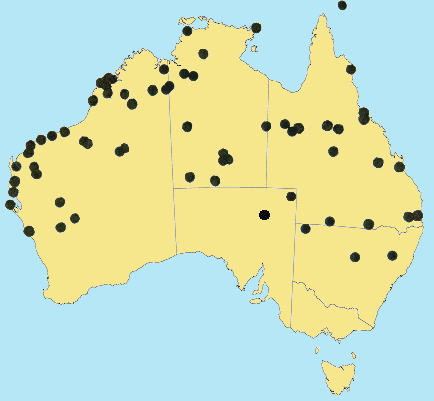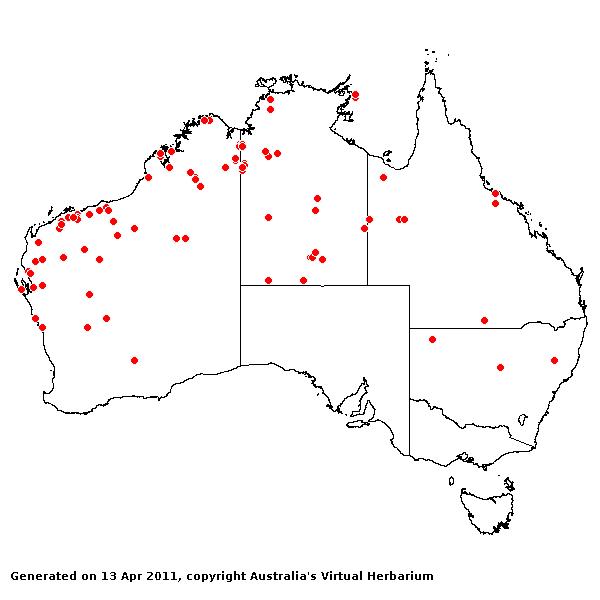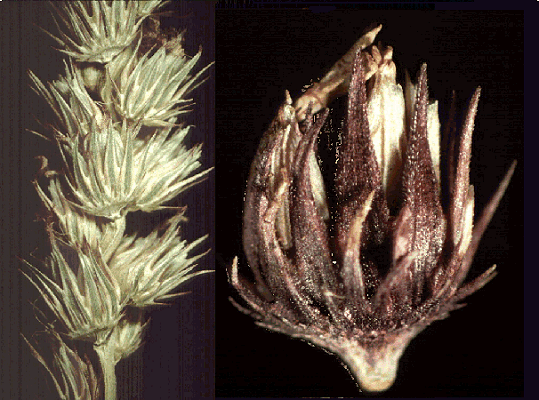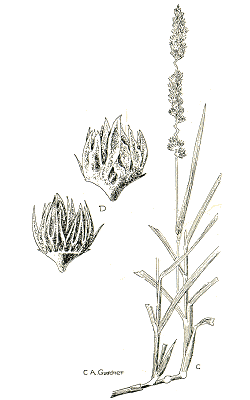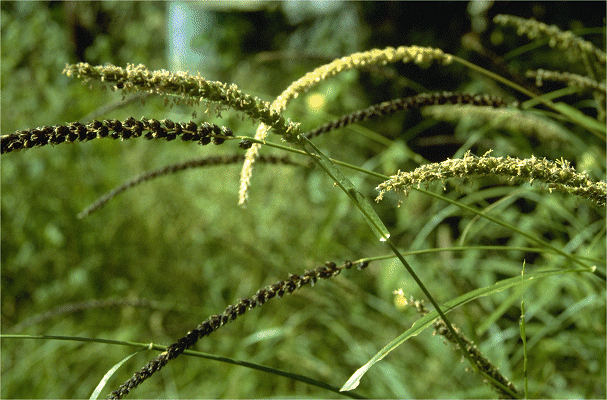Cenchrus setigerus* Vahl. Ann. Bot. 106: 129 (2010).
Classification. (GPWG 2001) : Subfamily
Panicoideae. Paniceae.
Basionym and/or
Replacement Name: Cenchrus
setigerus Vahl, Enum. Pl. 2: 395 (1805).
Type of Basionym or
Protologue Information: Saudi Arabia:, Forsskal s.n. (HT: C).
Recent synonyms:
Pennisetum setigerum.
Key references
(books and floras): [1952] C.A.Gardner, Flora of Western Australia 1
Gramineae (286), [1981] M.Lazarides in
J.Jessop (ed)., Flora of Central Australia (480),
[2002] D.Sharp & B.K.Simon, AusGrass, Grasses of Australia as Pennisetum setigerum, [2006]
J.Jessop, G.R.M.Dashorst, F.M.James, Grasses of South Australia (436), [2008] S.W.L.Jacobs, R.D.B.Walley & D.J.B.Wheeler, Grasses
of New South Wales (181).
Illustrations:
[1952] C.A.Gardner, Flora of Western Australia 1 Gramineae (285,
Pl.82), [2006] J.Jessop, G.R.M.Dashorst, F.M.James, Grasses
of South Australia (436, fig. 367), [2008] S.W.L.Jacobs, R.D.B.Whalley & D.J.B.Wheeler, Grasses
of New South Wales, 4th edn (181).
Habit. Perennial. Rhizomes present. Stolons absent. Culms geniculately
ascending, 5–100 cm tall. Ligule a fringe of hairs, 0.6–1.2 mm long.
Leaf-blades 2–30 cm long, 2–7 mm wide. Leaf-blade surface glabrous or
indumented.
Inflorescence.
Inflorescence solid, of only a few spikelets (spicate). Panicle linear, 2–12 cm
long. Racemes 2–12 cm long.
Spikelets.
Spikelets sessile, 1–3 in the cluster. Involucre composed of bristles, connate
into a cup below. Fertile spikelets 2-flowered, the lower floret barren (rarely
male), the upper fertile, comprising 1 basal sterile florets, comprising 1
fertile floret(s), without rachilla extension, ovate, dorsally compressed,
3–5.3 mm long.
Glumes. Glumes
thinner than fertile lemma. Lower glume ovate, hyaline, without keels, 1
-nerved. Lower glume surface indumented. Upper glume ovate, 1.5–2.9 mm long,
hyaline, without keels, 1 -nerved. Upper glume surface scabrous, indumented. Florets.
Basal sterile florets 1, barren, with palea. Lemma of lower sterile floret 100
% of length of spikelet, hyaline or membranous, 5 -nerved, mucronate.
Fertile lemma 2.8–5 mm
long, without keel, 5–7 -nerved. Lemma apex mucronate. Lodicules absent or
vestigial. Anthers 3. Grain 1.5 mm long.
Continental
Distribution: Africa, Temperate Asia, Tropical Asia, Australasia, Pacific,
and South America.
Australian
Distribution: Western Australia, Northern Territory, South Australia,
Queensland, New South Wales.
Western Australia:
Gardner, Fitzgerald. Canning, Fortescue, Carnarvon, Austin. Irwin. Northern
Territory: Darwin & Gulf, Victoria River, Central Australia North,
Central Australia South. South Australia: Lake Eyre. Queensland:
Burke, Cook, Leichhardt, Maranoa, Mitchell, North Kennedy, Warrego. New
South Wales: North Coast, Central Coast, Northern Tablelands.
Notes.
This species has frequently been confused with C. biflorus, from which
it differs in having antrorsely scabrid bristles.
Introduced. In
tropical and subtropical sub-humid woodlands, temperate sub-humid woodlands,
acacia shrublands, and arid hummock grasslands. Flowers Jan.-July.
